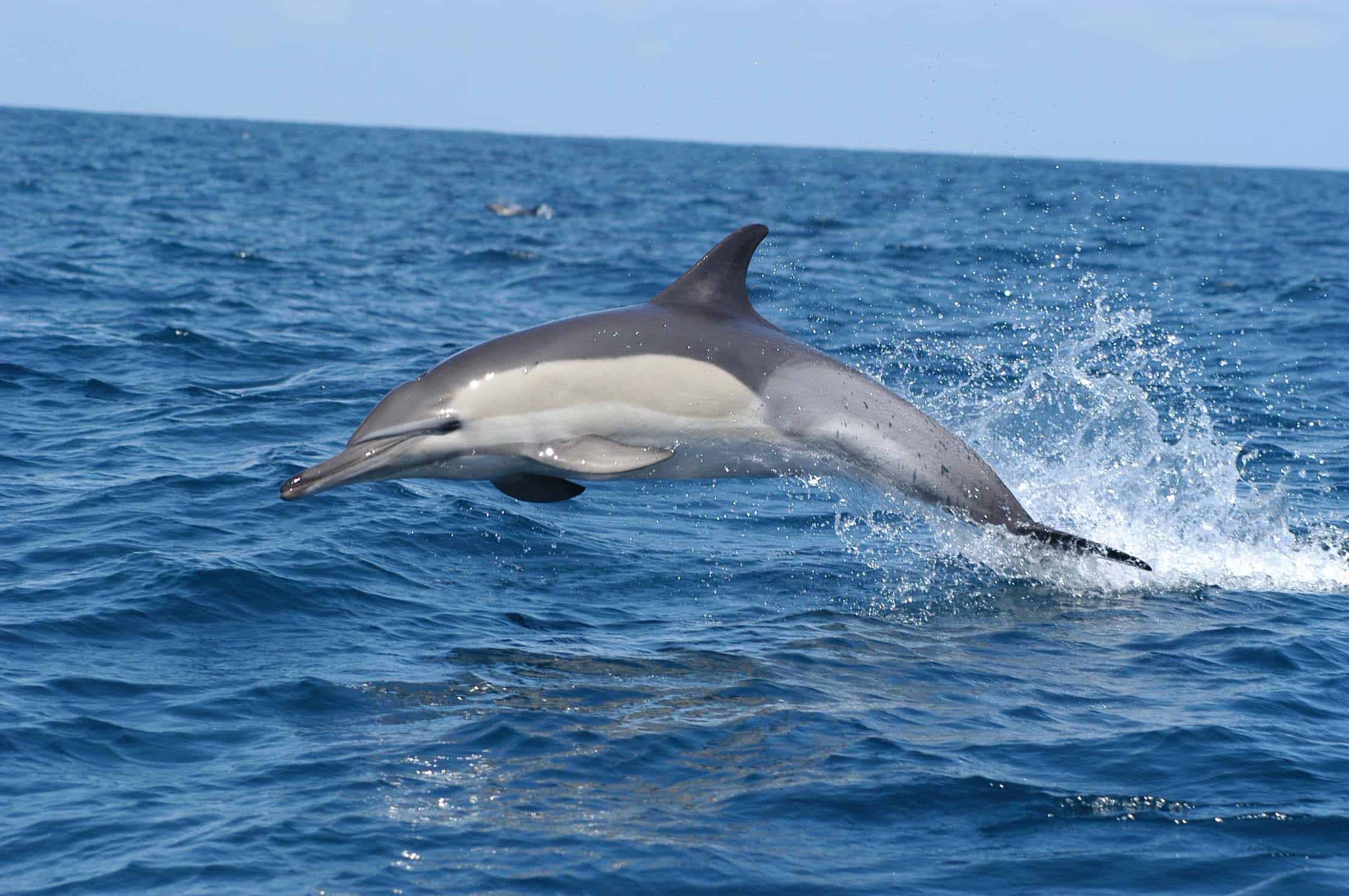Marine Mammal Guide for California Beaches – Part 2
 http://biology.ucf.edu/~gworthy/PEBL/common%20dolphin%20South%20Africa.jpg
http://biology.ucf.edu/~gworthy/PEBL/common%20dolphin%20South%20Africa.jpg  http://sanctuaries.noaa.gov/jointplan/presskit/mb/17pacwhitside_dolphins.jpg
http://sanctuaries.noaa.gov/jointplan/presskit/mb/17pacwhitside_dolphins.jpg
Marine mammals either spend most or all of their life in the water. They are mammals rather than fish because (like humans) they are warm-blooded, breath air with lungs, produce milk to feed their young, give birth to live babies rather than laying eggs, and have hair or fur.
Although it’s sometimes possible for you to get quite close to, and even touch, these animals, don’t! Why? One, they may be cute but they are still wild animals. Two, contact with humans may hurt them. Three, they are protected by the Marine Mammal Protection Act of 1972, which states that it’s illegal for people to “harass, feed, hunt, capture, collect, or kill any marine mammal or part of a marine mammal.” (marinemammalcenter.org)
Whales
There are actually two distinct types of whale, baleen and toothed. Baleen is made out of keratin (so are our fingernails) and baleen whales eat by taking in gigantic mouthfuls of water then trapping the food in their baleen, which works like a sieve. Strangely enough, even though baleen whales’ food is tiny, baleen whales are much bigger than toothed whales. Another interesting fact is that dolphins and porpoises are actually whales; they are part of the toothed whale family.
Baleen Whales
Gray Whales
Gray whales make one of the longest of all animal migrations, averaging 10,000-14,000 miles (16,000-22,530 km) round trip from Alaska (where they feed) to Baja California (where they mate and give birth) and back again. The journey takes from 2 to 3 months each way.
Some of the places where they are commonly found include:
- Ano Nuevo State Park in San Mateo County (mid-March through early May)
- Sonoma State Beach in Bodega Bay (mid-March through early May)
- Mattole Recreation Area in Shelter Cove (April through June)
- Shelter Cove in Shelter Cove (April through June)
- Point Lobos State Natural Reserve in Carmel (January through March)
- Point Reyes National Seashore in Olema (mid-March through early May)
- Torrey Pines State Beach in San Diego (December through early April)
- Cabrillo National Monument in San Diego (December through early April)
- Monterey Bay in Monterey County (January through March)
- Dana Point in Dana Point (December through April)
- The Channel Islands in the Santa Barbara Channel (mid-February through April)
Note: All dates are approximate.
Finback (Fin) Whales
Fin whales are the second largest whale and one of the fastest. They can attain bursts of speed up to 23 miles per hour. Because of this they are often called the “greyhound of the sea”. (acsonline.org)
Blue Whales
Blue whales are the largest animals on earth. They can grow up to 100 feet (30 meters) long and 200 tons (181 metric tons) in weight. “Their tongues alone can weigh as much as an elephant. Their hearts, as much as an automobile.” (animals.nationalgeographic.com)
Humpback Whales
Humpback whales are famous for their “songs” and the fact that the shape and color pattern on their dorsal fins and flukes (tail) are as individual in each animal as are fingerprints in humans. (acsonline.org)
Fin, blue, and humpback whales all feed in the same coastal areas of California summer through fall. Some of the places where they are commonly found include:
- Rancho Guadalupe Dunes Preserve in Santa Barbara County (May through November)
- Monterey Bay in Monterey County (May through mid-November)
- The Channel Islands in the Santa Barbara Channel (May through November)
- Dana Point in Dana Point (June through October)
- Santa Monica Bay in Los Angeles (June through October)
Note: All dates are approximate.
Toothed Whales
Risso’s Dolphins
Risso’s dolphins have very unique teeth. They have only 7 pairs of teeth on their lower jaw and none on the top.
Common Dolphins
Common dolphins are energetic, active and frequently seen leaping, belly flopping, and somersaulting in the ocean. They travel in large groups (called pods) and are often found riding boats’ bows.
Pacific White-Sided Dolphins
Pacific white-sided dolphins are easily confused with common dolphins since they look and behave very similarly. One distinguishing characteristic is that the pacific white-sided dolphin’s dorsal (fin on their back) fin has a hook on the end of it and the dorsal fins of common dolphins don’t.
Risso’s dolphins, common dolphins, and pacific white-sided dolphins don’t migrate and can be seen year round. Some of the places where they are commonly found include:
- Monterey Bay in Monterey County
- The Channel Islands in the Santa Barbara Channel
- Torrey Pines State Beach in San Diego
- Cabrillo National Monument in San Diego
- Dana Point in Dana Point
- Santa Monica Bay in Los Angeles
To many joyful beach experiences!
— Lisa Dworkin
Gray whale photo courtesy of http://tinyurl.com/4ckltw2
Finback whale photo courtesy of http://tinyurl.com/4odwdv3
Blue whale photo courtesy of http://tinyurl.com/4t695ob
Humpback whale photo courtesy of http://tinyurl.com/477qa5t
Risso’s dolphin photo courtesy of http://tinyurl.com/4bsgxfe
Common dolphin photo courtesy of http://tinyurl.com/4lqkp6z
Pacific white-sided dolphin photo courtesy of http://tinyurl.com/4hrkrz7

